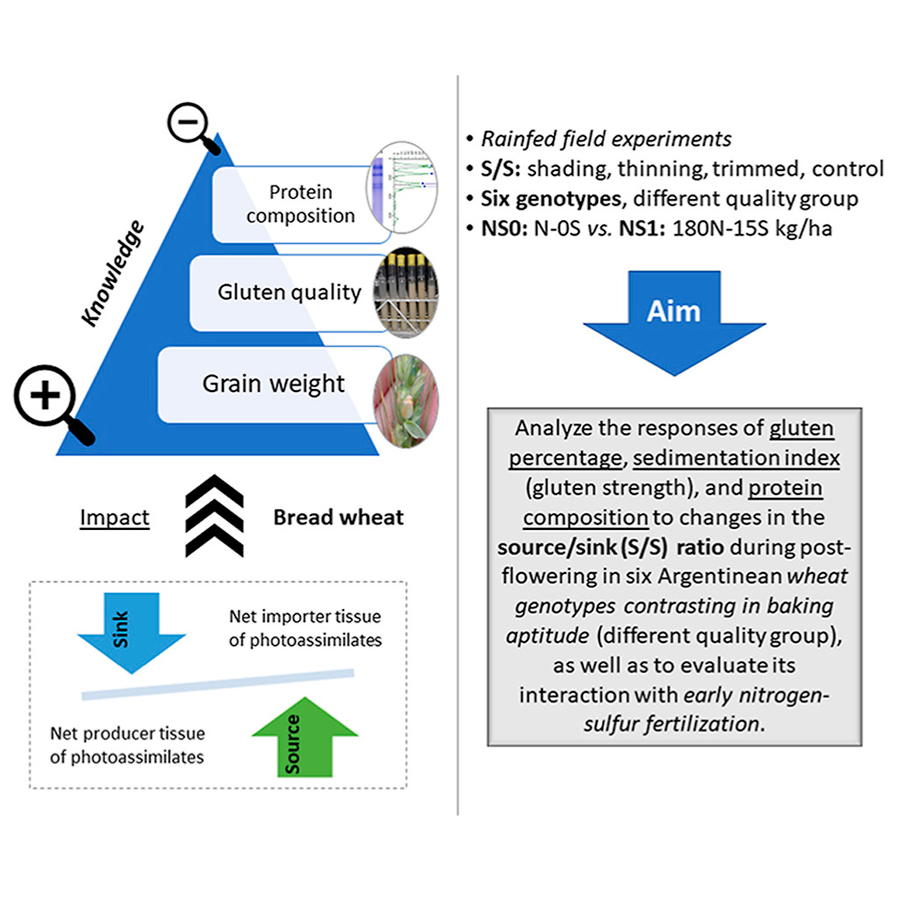Journal of Cereal Science, Available online 28 March, 103900, 2024
Highlights
• The impact of source/sink on gluten quality and protein composition was assessed.
• Genotypes differed in their stability to source/sink ratio variations.
• Subunits encoded by Glu-A1x and Glu-D1y were more sensible to growth per grain.
• N–S fertilization increased gluten percentage responses to source/sink ratio.
Abstract
Studies of the impact of assimilate availability during grain filling on protein composition and gluten quality of bread wheat are scarce. Therefore, this work aimed to analyze the responses of wet gluten percentage, SDS sedimentation index, and protein composition to changes in the source/sink (S/S) ratio (post-flowering growth per grain) in six Argentinean wheat genotypes contrasting in baking aptitude (three quality groups), as well as to evaluate its interaction with early nitrogen-sulfur fertilization. For two years, rainfed field trials were carried out in the Humid Pampas in Southern South America, applying manipulative S/S treatments (shading, defoliation, thinning, and trimming). Gluten percentage showed a negative linear trend against the increase in S/S ratio with differences among genotypes even within the same quality group (slope range: −0.0248 to −0.6566). The associations between the main protein fractions (i.e., GLI/GLU, HMW/LMW) with the S/S ratio were not significant, while the proportions of specific high molecular weight glutenin subunits were relevant, such as Glu-A1x/HMW (slope range: −0.00027 to −0.00147) and Glu-D1y/HMW (0.00029–0.00139). Early nitrogen-sulfur fertilization increased the influence of the S/S ratio on gluten percentage while stabilizing the sedimentation index. These results apport another approach, based on S/S ratio, to understanding the determination of grain quality under changing contexts.

